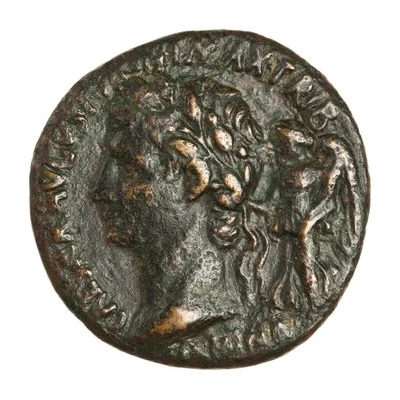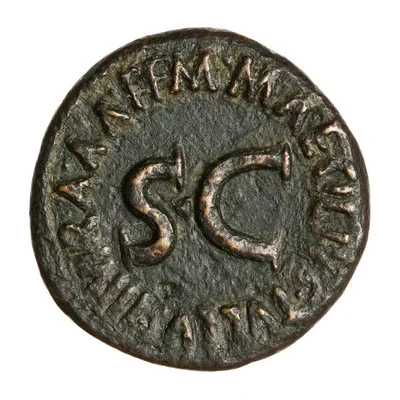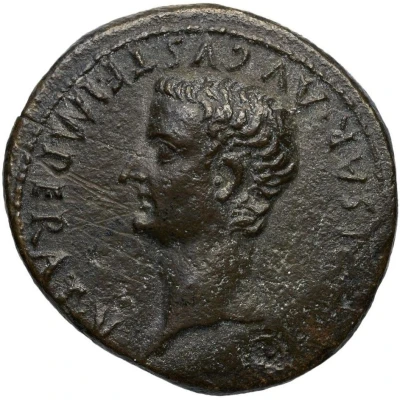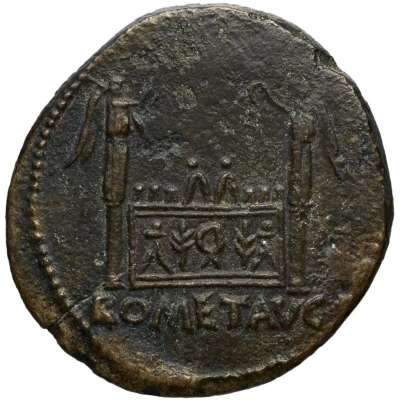


© Classical Numismatic Group, Inc.
Dupondius - Augustus M MAECILIVS TVLLVS IIIVIR A A A F FS C; Victory 7 BC
7 BC year| Bronze | 21 g | 35 mm |
| Issuer | Rome › Roman Empire (27 BC - 395 AD) |
|---|---|
| Emperor | Augustus (Caius Octavius) (27 BC - 14 AD) |
| Type | Standard circulation coin |
| Year | 7 BC |
| Value | 1 Dupondius = ⅛ Denarius |
| Currency | Denarius, Reform of Augustus (27 BC – AD 215) |
| Composition | Bronze |
| Weight | 21 g |
| Diameter | 35 mm |
| Shape | Round (irregular) |
| Technique | Hammered |
| Demonetized | Yes |
| Updated | 2024-10-06 |
| Numista | N#247916 |
|---|---|
| Rarity index | 100% |
Reverse
Legend surrounding S C.
Script: Latin
Lettering:
M MAECILIVS TVLLVS IIIVIR A A A F F
S C
Translation:
Marcus Maecillius Tullus Triumvir Auro, Argento, Aere, Flando, Feriundo. Senatus Consultum.
Marcus Maecillius Tullus, moneyer (Triumvir Monetalis) for the casting and striking of gold, silver, and bronze coins. Decree of the senate.
Comment
Mass varies: 17.2–24.72 g;Source: Online Coins of the Roman Empire (OCRE)
Interesting fact
The Dupondius coin featuring Augustus, minted in 7 BC, is interesting because it was part of a series of coins issued during his reign that aimed to promote his image as a powerful and benevolent leader. The coin's design, which includes a depiction of Victory on the reverse, symbolizes Augustus' military triumphs and his role as a bringer of peace and prosperity to the Roman Empire. Additionally, the use of bronze as the material for the coin reflects the empire's shift towards using more affordable materials for currency, as opposed to the more expensive gold and silver coins that were previously used.



